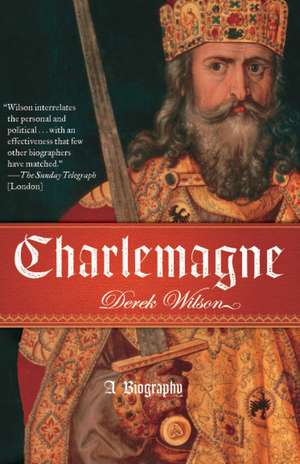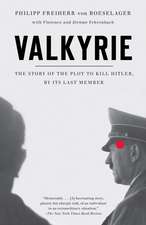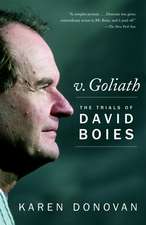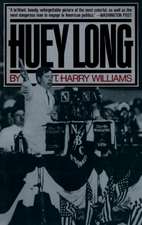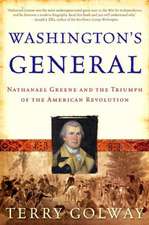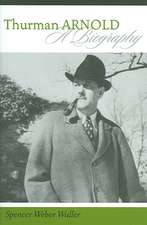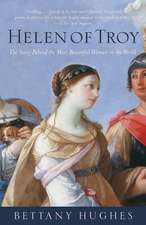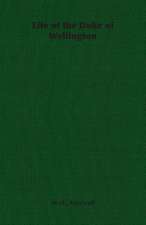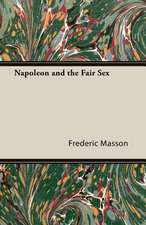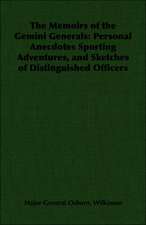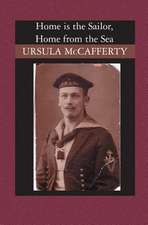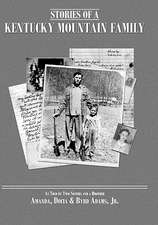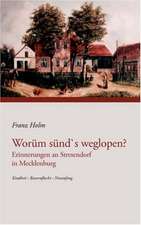Charlemagne
Autor Derek A. Wilsonen Limba Engleză Paperback – 31 mai 2007 – vârsta de la 14 până la 18 ani
Preț: 119.25 lei
Nou
Puncte Express: 179
Preț estimativ în valută:
22.82€ • 23.80$ • 18.97£
22.82€ • 23.80$ • 18.97£
Carte disponibilă
Livrare economică 28 februarie-14 martie
Preluare comenzi: 021 569.72.76
Specificații
ISBN-13: 9780307274809
ISBN-10: 0307274802
Pagini: 226
Ilustrații: 16 PP COLOR
Dimensiuni: 135 x 203 x 21 mm
Greutate: 0.29 kg
Ediția:Reprint
Editura: Vintage Books USA
ISBN-10: 0307274802
Pagini: 226
Ilustrații: 16 PP COLOR
Dimensiuni: 135 x 203 x 21 mm
Greutate: 0.29 kg
Ediția:Reprint
Editura: Vintage Books USA
Notă biografică
Derek Wilson graduated from Cambridge in 1961. He spent several years traveling and teaching in Africa before becoming a full-time writer and broadcaster in 1971. His highly acclaimed books include Rothschild: A Story of Wealth and Power, Hans Holbein: Portrait of an Unknown Man, and Tudor Tapestry: Men, Women and Society in Reformation England. The organizer of the Cambridge History Festival, Wilson is married and lives in Devon, England.
Extras
CHAPTER 1
Inheritance
He pitched there a tent and was waiting in prayer the arrival of the new converts when, behold! instead of friends, a band of enraged infidels appeared on the plains all in arms and, coming up, rushed into his tent. The servants that were with the holy martyr were for defending his life by fighting; but he would not suffer it, declaring that the day he had long waited for was come, which was to bring him to the eternal joys of the Lord. He encouraged the rest to meet with cheerfulness and constancy a death which was to them the gate of everlasting life.(1)
That account of the death of Boniface, the "Apostle of Germany," in June 754 is important because it marks a turning point in world history. It is also useful as a launchpad for this book because it may help us to get into the right frame of mind to approach the life and times of Charles the Great. Professor Barraclough succinctly observed, "Without Boniface there could have been no Charles"(2) and that is a truth that we in the laid-back, agnostic, twenty-first-century West should not lose sight of. If we find it difficult to understand the mentality of Islamic suicide bombers and tend to be dismissive of all fundamentalisms, then our imaginations need to be jolted so that we can place ourselves alongside the warriors, scholars and missionaries who created and led the first western empire. They were men who believed simply, felt passionately, saw complex issues in black and white, were aggressive in word and deed and understood this world as but a shadow of a greater reality. And it was because they were the men they were--heroes in every sense of the word--that they turned the tide of events, took hold of a culture that seemed doomed to extermination by superior forces and forged the civilization of which we are the heirs.
The Carolingian prince who would become Charlemagne was only twelve years old when the venerable English missionary, Boniface, went to his death in what is now Holland, but he knew Boniface and the septuagenarian's martyrdom will have made its impact on the boy. Boniface had been a very important figure in the life of Charlemagne's family, a bold, uncompromising religious hero and a Carolingian supporter who inspired gratitude and awe. This bustling, no-nonsense ecclesiastic towered over church life north of the Alps and it was he who legitimized the coup that established Charles' father as the progenitor of a new sovereign dynasty in Francia.
Frankish dominance in the area west of the Rhine had been established by Clovis in the fifth century, and his descendants of the Merovingian ruling house had pushed their boundaries ever farther. But, in the way of hereditary dynasties, enjoyment of power gradually took the place of effective exercise of power. Successive rulers relied increasingly on their leading court officials, the mayors of the palace, to fight their wars and administer their lands. In 750, the reigning mayor, Pepin III (Pepin the Short), decided to bring this unsatisfactory situation to an end. But, instead of simply seizing power and disposing of Childeric III, the last Merovingian, he sought papal authentication for his usurpation. He sent Rome a message as brief as it was pregnant with significance: "Is it wise to have kings who have no power or control?" Pope Zacharias, who had his own reasons for wishing to oblige Pepin, concluded that it was not wise. Armed with the permission of God's representative on earth, Pepin bundled Childeric off to a monastery where he lived out his days, while Pepin himself was anointed King of the Franks. The man deputed to officiate at this ceremony on Zacharias' behalf was Boniface. It was the forging of this unique bond between the spiritual and terrestrial powers that was to form the basis of what became the Holy Roman Empire. More important, the creation of a religious and civil infrastructure--neither theocracy nor secular state--made possible whatever it is that we call "Europe."
Only in the closing years of his reign did Charlemagne and his contemporaries begin to think of themselves as Europeans, and any notion they had of a newly emerging cultural entity was, at best, shadowy. They were too close to the political, religious and racial pressures that were forming this entity to be able to give it a name. We must, therefore, take a little time out to study the map of those lands where the slow but dramatic metamorphosis was taking place. The Roman world had been centered on the Mediterranean basin. As the triumphant armies of the Empire and the Republic extended their sway farther and farther from their homeland, they applied vague names to the hinterlands of those regions that remained largely outside their permanent control. To the south, beyond Mare Nostrum, lay Africa. Eastward, over the Hellespont, was Asia. The land on the far side of the Alps bordered only by forbidding forest and the Atlantic world's edge was Europa. The appearance of Christianity as a world religion that replaced tribal and household gods gave the heterogeneous, overextended Roman state what was no more than a semblance of cultural unity and greater political stability, even after Constantine converted to the faith of the crucified Jew.
Under pressure of the barbarian invasions of the fifth and sixth centuries, the Romano-Christian world contracted to the Mediterranean fringes and to scattered monastic outposts, where men and women of prayer kept the sacred flame of faith and learning flickering and planned the evangelization of their pagan neighbors. Worse was to come in the shape of the Islamic explosion. After the death of Mohammed in 632, his followers, aflame with the zeal of their new faith and a passion for military conquest, surged in all directions from their Arabian heartland. Within a century the Mediterranean, once a Roman lake, was bordered by lands over which the crescent flag flew. From Palestine, along the African littoral, across the Strait of Gibraltar and on to the Pyrenees the champions of the new religion advanced with a speed and success that dwarfed the earlier achievements of Christianity. By the time that Charles, the eldest son of Pepin the Short, was born in 742, the followers of the Cross were everywhere under pressure. The once fiercely thriving North African Church had been obliterated. In the East, the Muslim advance had been halted at the Taurus Mountains, but this had not prevented military expeditions reaching the Bosporus in 673 and 717. In the West, the seemingly inexorable triumph of Islamic arms had only been checked by Pepin's father, Charles Martel, at the Battle of Poitiers in 732. The Christianized transalpine tribes were between the hammer of an aggressive Islam and the anvil of disparate pagan communities to the east and northeast--Frisians, Saxons and Alemanni--who were themselves being harassed by the westward-thrusting Slavs.
As if that were not bad enough, the professional Church was in a perilous state. Ever since Constantine had moved his capital to the Golden Horn, a gulf had grown between the leaders of the Latin Church in Rome and the Greek patriarchs of Byzantium. Since both priestly houses claimed unifying authority, they effectively divided the Christian world. But that was only one of several tears in the seamless robe of Christ. Throughout the Latin half of the Church there was scant uniformity of either belief or practice. Wherever mass conversions were achieved, they usually involved an element of compromise with prevailing customs. Thus pagan and Christian symbols are often found side by side in ancient burials. Some Germanic tribes had actually embraced the old heresy of Arianism, outlawed at the Council of Nicaea in 325, to demonstrate their independence from the pope. In 664 it took a very acrimonious debate at the Synod of Whitby to induce the Celtic Church to celebrate Easter on the same date as the "mother" Church in Rome. Even where orthodoxy was impeccable, morality often was not. In a turbulent age the authority of the clergy depended almost entirely on their education and the purity of their lives. All too often they forfeited any influence they might have enjoyed by ignorant and unbridled behavior. The peripatetic Boniface expended more effort in disciplining adulterous monks and clerical rapists than in bringing heathens to the baptismal font. A council at Aix-la-Chapelle in 836 denounced certain convents for practicing infanticide in order to dispose of the evidence of their inmates' sexual activities. With all these internal weaknesses and external pressures, no betting man would have wagered on the emergence from this threatened culture of a world-conquering Christian civilization. That such a civilization did emerge is thanks to three types of men: Celtic missionaries, Roman popes and Frankish kings.
Two religious currents--one from the north and one from the south--washed over Francia. Celtic spirituality was, and is, a very distinctive strain of religious experience. The conditions for its development and spread were restricted in both space and time. Like a diamond formed under intense pressure, it developed in a narrow cultural stratum sandwiched between the ancient rock of Celtic paganism and the new deposits of Anglo-Saxon paganism. The first native, British Christians built centers for the exercise of their highly disciplined routines of worship and meditation in the remoter parts of the remotest western province of what had been the Roman Empire. In the white heat of a spiritual commitment that refused to be obsessed with mere survival, they planned and launched ever more extensive evangelistic crusades. This, the first experience of Britain at the heart of Europe, was one of the most remarkable phases in the long history of Christian missionary endeavor, and its legends ring with the names of such heroes as Patrick, Columba, Aidan, Columban and Boniface. Most religious revivals peter out after a few decades. This one lasted in full vigor for an amazing four centuries, from the time when the last Roman conquerors departed to the moment when the first Viking invaders arrived. It would be impossible to overestimate the long-term effects of this religious explosion.
If we were to tease out from the multistranded life and teaching of these Celtic men and women (for women contemplatives always featured significantly within early British Christianity) a couple of features that help to explain their success, we might choose ones that seem, on the face of it, mutually contradictory. These saints manifested a strict puritanism allied with a flexibility toward pagan beliefs. On the one hand, they locked themselves in monastic "fortresses" such as Iona and Lindisfarne, where they could practice their austerities undisturbed; on the other, they pledged themselves to peregrinatio, wandering among strangers and unbelievers, protected only by the "breastplate" of faith, adumbrated by Patrick's famous hymn:
Christ be with me, Christ within me,
Christ behind me, Christ before me,
Christ beside me, Christ to win me,
Christ to comfort and restore me,
Christ beneath me, Christ above me,
Christ in quiet, Christ in danger,
Christ in hearts of all that love me,
Christ in mouth of friend and stranger.
Like itinerant holy men of all ages, the Celtic missionaries attracted curiosity and admiration. Numerous miracles were attributed to them. Yet in their preaching they did not exhort converts to commit themselves to the kind of renunciation and asceticism they followed themselves. They did not even demand unquestioning adherence to every tenet of Christian dogma and ethics.
One reason why Christianity has been the most successful of all world religions in crossing cultural boundaries is its adaptability. To be sure, this has not been manifested in all places and at all times. Some missionary endeavors have been based on the premise that any rival belief system is of the devil and must be totally obliterated. Contrariwise, there have been occasions when, for the sake of number crunching, religious fundamentals have been sacrificed. On the whole, however, wise evangelists have understood not only that the Gospel may be garbed in a variety of national costumes but that incorporating fresh customs and thought patterns actually enriches the life of new churches.
Celtic Christianity was itself an indigenous expression of "the faith once given" and not a carbon copy of the church life of Rome. Some of its customs were sharply at variance with what was culturally acceptable in Italy. It had married clergy and permitted women an active role in the liturgy--something anathema south of the Alps. Its organization focused on monastic cells rather than territorial dioceses. In fact, "organization" was scarcely a word in the vocabulary of these Celtic monks. They were dynamic missionaries, pilgrimaging throughout this world on their way to heaven. They had little time or inclination for establishing power bases.
Evangelistic strategy motivated their interaction with the prevailing cultures. They had found ways to mediate Christianity in terms that were deeply meaningful to the nature-worshipping instincts of their own and other people. Their pagan ancestors had made offerings to the gods of mountain spring and oaken grove, had prayed to the spirits residing in the animals they hunted and the plants they gathered for their healing properties. Men of the new faith, like St. Patrick, found ways to express their beliefs that were acceptable to a people living close to nature, without capitulating to pantheism:
Our God is the God of all men, the God of heaven and earth, of sea and river, of sun and moon and stars, of the lofty mountain and the lowly valley . . . He has his dwelling around heaven and earth and sea and all that in them is. He inspires all, he quickens all, he dominates all, he sustains all . . .(3)
It was in the scriptoria of the Celtic monasteries that the old sagas were written down for the first time and preserved alongside the Christian Scriptures and the lives of the saints. And the most familiar of all expressions of Celtic art, the great stone crosses, were a continuation of an ancient custom of erecting standing monuments carved with the symbols of the old religion.
While independent of power structures, the Celtic Christians could not avoid the realities of tribal government. Not only did they commend themselves to their own people and those of neighboring tribes by empathizing with their veneration of the mysteries of creation but they taught that their God was also interested in politics:
Tassilo, duke of the Bavarians . . . commended himself into vassalage with his lands, and swore innumerable oaths. Touching the relics of the saints, he promised fealty to King Pepin and his sons Charles and Carloman, behaving honestly and faithfully, in accordance with the law and as a vassal should to his lords. Tassilo thus swore on the bodies of St. Dionysius, Rusticus, Eleutherius, St. Germanus, and St. Martin that he would remain faithful all his life . . .(4)
Just as the spirits, whether pagan or Christian, manifested themselves through the physical universe, so they also did through the ordering of society. The hierarchy, like Jacob's ladder, extended from earth to heaven. At its base were slaves and landless peasants. From them one ascended through the ranks of warriors, aristocrats and princes to the domain of the shining ones--heroes and ancestors or, in the Christian pantheon, saints and angels thronging the throne room of the triune God. Theologians, preachers and artists presented the court of Christ the King in terms of the splendor of earthly monarchs, and the splendor of earthly monarchs in terms of the court of Christ the King. There was a mysterium about human sovereignty which paralleled that of divine majesty. In ancient Celtic political theory, the king was charged by the gods with responsibility for the well-being of his people and endowed with magical powers to support his dignity and authority. Just as he received fealty from his vassals, so he paid homage to his spiritual superiors. This thinking was very easily Christianized. Thus, in those lands that fell under the influence of British missionaries, kings were conceived of as holding a divine mandate and being responsible to God alone for its execution.
From the Hardcover edition.
Inheritance
He pitched there a tent and was waiting in prayer the arrival of the new converts when, behold! instead of friends, a band of enraged infidels appeared on the plains all in arms and, coming up, rushed into his tent. The servants that were with the holy martyr were for defending his life by fighting; but he would not suffer it, declaring that the day he had long waited for was come, which was to bring him to the eternal joys of the Lord. He encouraged the rest to meet with cheerfulness and constancy a death which was to them the gate of everlasting life.(1)
That account of the death of Boniface, the "Apostle of Germany," in June 754 is important because it marks a turning point in world history. It is also useful as a launchpad for this book because it may help us to get into the right frame of mind to approach the life and times of Charles the Great. Professor Barraclough succinctly observed, "Without Boniface there could have been no Charles"(2) and that is a truth that we in the laid-back, agnostic, twenty-first-century West should not lose sight of. If we find it difficult to understand the mentality of Islamic suicide bombers and tend to be dismissive of all fundamentalisms, then our imaginations need to be jolted so that we can place ourselves alongside the warriors, scholars and missionaries who created and led the first western empire. They were men who believed simply, felt passionately, saw complex issues in black and white, were aggressive in word and deed and understood this world as but a shadow of a greater reality. And it was because they were the men they were--heroes in every sense of the word--that they turned the tide of events, took hold of a culture that seemed doomed to extermination by superior forces and forged the civilization of which we are the heirs.
The Carolingian prince who would become Charlemagne was only twelve years old when the venerable English missionary, Boniface, went to his death in what is now Holland, but he knew Boniface and the septuagenarian's martyrdom will have made its impact on the boy. Boniface had been a very important figure in the life of Charlemagne's family, a bold, uncompromising religious hero and a Carolingian supporter who inspired gratitude and awe. This bustling, no-nonsense ecclesiastic towered over church life north of the Alps and it was he who legitimized the coup that established Charles' father as the progenitor of a new sovereign dynasty in Francia.
Frankish dominance in the area west of the Rhine had been established by Clovis in the fifth century, and his descendants of the Merovingian ruling house had pushed their boundaries ever farther. But, in the way of hereditary dynasties, enjoyment of power gradually took the place of effective exercise of power. Successive rulers relied increasingly on their leading court officials, the mayors of the palace, to fight their wars and administer their lands. In 750, the reigning mayor, Pepin III (Pepin the Short), decided to bring this unsatisfactory situation to an end. But, instead of simply seizing power and disposing of Childeric III, the last Merovingian, he sought papal authentication for his usurpation. He sent Rome a message as brief as it was pregnant with significance: "Is it wise to have kings who have no power or control?" Pope Zacharias, who had his own reasons for wishing to oblige Pepin, concluded that it was not wise. Armed with the permission of God's representative on earth, Pepin bundled Childeric off to a monastery where he lived out his days, while Pepin himself was anointed King of the Franks. The man deputed to officiate at this ceremony on Zacharias' behalf was Boniface. It was the forging of this unique bond between the spiritual and terrestrial powers that was to form the basis of what became the Holy Roman Empire. More important, the creation of a religious and civil infrastructure--neither theocracy nor secular state--made possible whatever it is that we call "Europe."
Only in the closing years of his reign did Charlemagne and his contemporaries begin to think of themselves as Europeans, and any notion they had of a newly emerging cultural entity was, at best, shadowy. They were too close to the political, religious and racial pressures that were forming this entity to be able to give it a name. We must, therefore, take a little time out to study the map of those lands where the slow but dramatic metamorphosis was taking place. The Roman world had been centered on the Mediterranean basin. As the triumphant armies of the Empire and the Republic extended their sway farther and farther from their homeland, they applied vague names to the hinterlands of those regions that remained largely outside their permanent control. To the south, beyond Mare Nostrum, lay Africa. Eastward, over the Hellespont, was Asia. The land on the far side of the Alps bordered only by forbidding forest and the Atlantic world's edge was Europa. The appearance of Christianity as a world religion that replaced tribal and household gods gave the heterogeneous, overextended Roman state what was no more than a semblance of cultural unity and greater political stability, even after Constantine converted to the faith of the crucified Jew.
Under pressure of the barbarian invasions of the fifth and sixth centuries, the Romano-Christian world contracted to the Mediterranean fringes and to scattered monastic outposts, where men and women of prayer kept the sacred flame of faith and learning flickering and planned the evangelization of their pagan neighbors. Worse was to come in the shape of the Islamic explosion. After the death of Mohammed in 632, his followers, aflame with the zeal of their new faith and a passion for military conquest, surged in all directions from their Arabian heartland. Within a century the Mediterranean, once a Roman lake, was bordered by lands over which the crescent flag flew. From Palestine, along the African littoral, across the Strait of Gibraltar and on to the Pyrenees the champions of the new religion advanced with a speed and success that dwarfed the earlier achievements of Christianity. By the time that Charles, the eldest son of Pepin the Short, was born in 742, the followers of the Cross were everywhere under pressure. The once fiercely thriving North African Church had been obliterated. In the East, the Muslim advance had been halted at the Taurus Mountains, but this had not prevented military expeditions reaching the Bosporus in 673 and 717. In the West, the seemingly inexorable triumph of Islamic arms had only been checked by Pepin's father, Charles Martel, at the Battle of Poitiers in 732. The Christianized transalpine tribes were between the hammer of an aggressive Islam and the anvil of disparate pagan communities to the east and northeast--Frisians, Saxons and Alemanni--who were themselves being harassed by the westward-thrusting Slavs.
As if that were not bad enough, the professional Church was in a perilous state. Ever since Constantine had moved his capital to the Golden Horn, a gulf had grown between the leaders of the Latin Church in Rome and the Greek patriarchs of Byzantium. Since both priestly houses claimed unifying authority, they effectively divided the Christian world. But that was only one of several tears in the seamless robe of Christ. Throughout the Latin half of the Church there was scant uniformity of either belief or practice. Wherever mass conversions were achieved, they usually involved an element of compromise with prevailing customs. Thus pagan and Christian symbols are often found side by side in ancient burials. Some Germanic tribes had actually embraced the old heresy of Arianism, outlawed at the Council of Nicaea in 325, to demonstrate their independence from the pope. In 664 it took a very acrimonious debate at the Synod of Whitby to induce the Celtic Church to celebrate Easter on the same date as the "mother" Church in Rome. Even where orthodoxy was impeccable, morality often was not. In a turbulent age the authority of the clergy depended almost entirely on their education and the purity of their lives. All too often they forfeited any influence they might have enjoyed by ignorant and unbridled behavior. The peripatetic Boniface expended more effort in disciplining adulterous monks and clerical rapists than in bringing heathens to the baptismal font. A council at Aix-la-Chapelle in 836 denounced certain convents for practicing infanticide in order to dispose of the evidence of their inmates' sexual activities. With all these internal weaknesses and external pressures, no betting man would have wagered on the emergence from this threatened culture of a world-conquering Christian civilization. That such a civilization did emerge is thanks to three types of men: Celtic missionaries, Roman popes and Frankish kings.
Two religious currents--one from the north and one from the south--washed over Francia. Celtic spirituality was, and is, a very distinctive strain of religious experience. The conditions for its development and spread were restricted in both space and time. Like a diamond formed under intense pressure, it developed in a narrow cultural stratum sandwiched between the ancient rock of Celtic paganism and the new deposits of Anglo-Saxon paganism. The first native, British Christians built centers for the exercise of their highly disciplined routines of worship and meditation in the remoter parts of the remotest western province of what had been the Roman Empire. In the white heat of a spiritual commitment that refused to be obsessed with mere survival, they planned and launched ever more extensive evangelistic crusades. This, the first experience of Britain at the heart of Europe, was one of the most remarkable phases in the long history of Christian missionary endeavor, and its legends ring with the names of such heroes as Patrick, Columba, Aidan, Columban and Boniface. Most religious revivals peter out after a few decades. This one lasted in full vigor for an amazing four centuries, from the time when the last Roman conquerors departed to the moment when the first Viking invaders arrived. It would be impossible to overestimate the long-term effects of this religious explosion.
If we were to tease out from the multistranded life and teaching of these Celtic men and women (for women contemplatives always featured significantly within early British Christianity) a couple of features that help to explain their success, we might choose ones that seem, on the face of it, mutually contradictory. These saints manifested a strict puritanism allied with a flexibility toward pagan beliefs. On the one hand, they locked themselves in monastic "fortresses" such as Iona and Lindisfarne, where they could practice their austerities undisturbed; on the other, they pledged themselves to peregrinatio, wandering among strangers and unbelievers, protected only by the "breastplate" of faith, adumbrated by Patrick's famous hymn:
Christ be with me, Christ within me,
Christ behind me, Christ before me,
Christ beside me, Christ to win me,
Christ to comfort and restore me,
Christ beneath me, Christ above me,
Christ in quiet, Christ in danger,
Christ in hearts of all that love me,
Christ in mouth of friend and stranger.
Like itinerant holy men of all ages, the Celtic missionaries attracted curiosity and admiration. Numerous miracles were attributed to them. Yet in their preaching they did not exhort converts to commit themselves to the kind of renunciation and asceticism they followed themselves. They did not even demand unquestioning adherence to every tenet of Christian dogma and ethics.
One reason why Christianity has been the most successful of all world religions in crossing cultural boundaries is its adaptability. To be sure, this has not been manifested in all places and at all times. Some missionary endeavors have been based on the premise that any rival belief system is of the devil and must be totally obliterated. Contrariwise, there have been occasions when, for the sake of number crunching, religious fundamentals have been sacrificed. On the whole, however, wise evangelists have understood not only that the Gospel may be garbed in a variety of national costumes but that incorporating fresh customs and thought patterns actually enriches the life of new churches.
Celtic Christianity was itself an indigenous expression of "the faith once given" and not a carbon copy of the church life of Rome. Some of its customs were sharply at variance with what was culturally acceptable in Italy. It had married clergy and permitted women an active role in the liturgy--something anathema south of the Alps. Its organization focused on monastic cells rather than territorial dioceses. In fact, "organization" was scarcely a word in the vocabulary of these Celtic monks. They were dynamic missionaries, pilgrimaging throughout this world on their way to heaven. They had little time or inclination for establishing power bases.
Evangelistic strategy motivated their interaction with the prevailing cultures. They had found ways to mediate Christianity in terms that were deeply meaningful to the nature-worshipping instincts of their own and other people. Their pagan ancestors had made offerings to the gods of mountain spring and oaken grove, had prayed to the spirits residing in the animals they hunted and the plants they gathered for their healing properties. Men of the new faith, like St. Patrick, found ways to express their beliefs that were acceptable to a people living close to nature, without capitulating to pantheism:
Our God is the God of all men, the God of heaven and earth, of sea and river, of sun and moon and stars, of the lofty mountain and the lowly valley . . . He has his dwelling around heaven and earth and sea and all that in them is. He inspires all, he quickens all, he dominates all, he sustains all . . .(3)
It was in the scriptoria of the Celtic monasteries that the old sagas were written down for the first time and preserved alongside the Christian Scriptures and the lives of the saints. And the most familiar of all expressions of Celtic art, the great stone crosses, were a continuation of an ancient custom of erecting standing monuments carved with the symbols of the old religion.
While independent of power structures, the Celtic Christians could not avoid the realities of tribal government. Not only did they commend themselves to their own people and those of neighboring tribes by empathizing with their veneration of the mysteries of creation but they taught that their God was also interested in politics:
Tassilo, duke of the Bavarians . . . commended himself into vassalage with his lands, and swore innumerable oaths. Touching the relics of the saints, he promised fealty to King Pepin and his sons Charles and Carloman, behaving honestly and faithfully, in accordance with the law and as a vassal should to his lords. Tassilo thus swore on the bodies of St. Dionysius, Rusticus, Eleutherius, St. Germanus, and St. Martin that he would remain faithful all his life . . .(4)
Just as the spirits, whether pagan or Christian, manifested themselves through the physical universe, so they also did through the ordering of society. The hierarchy, like Jacob's ladder, extended from earth to heaven. At its base were slaves and landless peasants. From them one ascended through the ranks of warriors, aristocrats and princes to the domain of the shining ones--heroes and ancestors or, in the Christian pantheon, saints and angels thronging the throne room of the triune God. Theologians, preachers and artists presented the court of Christ the King in terms of the splendor of earthly monarchs, and the splendor of earthly monarchs in terms of the court of Christ the King. There was a mysterium about human sovereignty which paralleled that of divine majesty. In ancient Celtic political theory, the king was charged by the gods with responsibility for the well-being of his people and endowed with magical powers to support his dignity and authority. Just as he received fealty from his vassals, so he paid homage to his spiritual superiors. This thinking was very easily Christianized. Thus, in those lands that fell under the influence of British missionaries, kings were conceived of as holding a divine mandate and being responsible to God alone for its execution.
From the Hardcover edition.
Recenzii
“Wilson interrelates the personal and political. . . with an effectiveness that few other biographers have matched.”—The Sunday Telegraph“Brilliant. . . . An utterly captivating and exquisitely written narrative about the rise and fall of the Carolingian empire. . . . Charlemagne is also a timely and provocative essay about the idea of Europe”—Donald Yerxa, editor, Historically Speaking“Fast-paced. . . . Wilson deftly chronicles Charlemagne's military exploits, political intrigues and religious devotion.”—Publishers Weekly “Masterful and lively. . . . [Wilson] writes with great conviction and a breathtaking attention to the kind of personal detail that makes his books such compelling reading.”—Alison Weir
